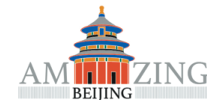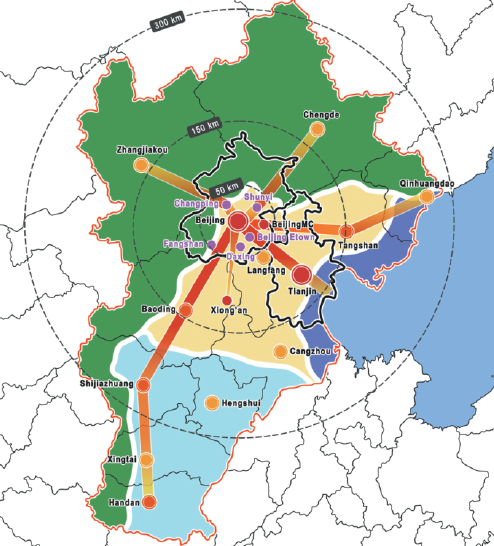Projects in pipeline for suburban oasis

Beijing develops New City on the Plain as part of efforts to modernize metropolitan area
Beijing will implement a series of landmark projects for the high-quality development of its "New City on the Plain" initiative this year, initiating the construction of major transit lines such as the northern section of subway Line 20 and the second phase of Line 19, according to the city's Development and Reform Commission.
The initiative encompasses Shunyi, Daxing, Changping, and Fangshan districts, as well as the Beijing Economic-Technological Development Area, more commonly known as Beijing E-Town. These areas host more than 30 percent of Beijing's permanent residents, a prime destination for young people making roots in the city.
To make the districts and Beijing E-Town more livable and suitable for business, the commission said this year's focus will be on addressing the needs of talented youth, the elderly, and children.
Efforts will be made to optimize housing supply and enhance public service standards, as well as to develop a model "garden city" that blends work, living, leisure, education, and elder care services seamlessly.
Moreover, to better serve enterprises, the designated areas will be benchmarked against the best international and domestic practices and advanced methods, combining them with regional specifics to create a unique business environment that fosters innovation and entrepreneurship.
According to Beijing's overall urban planning, the New City on the Plain is a strategic gateway for regional coordinated development, playing a crucial role in housing suitable functions from the central districts of Beijing and supporting the capital's functions. Also, it serves as an essential component in the modern capital metropolitan area.
After years of concentrated development, the comprehensive capacity of the New City on the Plain has continuously improved. Key industries like new energy vehicles, pharmaceuticals, new materials, and cutting-edge information technology are thriving.
Its industrial zones, such as the capital airport economic zone, biomedicine base, Future Science City, high-end manufacturing center, and the national information creativity park, have become hotbeds for investment and business activities.
According to the government deployment, the initiative has adhered to a "one area, one policy" approach, formulating high-quality development plans based on each area's unique characteristics and strengths.
For instance, Shunyi focuses on internationalization, developing an advanced airport economy zone and an international new city that integrates industry and city functions; Daxing emphasizes openness and reform, building a demonstration area for coordinated development; and Fangshan underlines safety and development, constructing an integrated area of culture, education, and intelligence industries.
The four districts and Beijing E-Town serve as critical areas for Beijing's five key moves, which include building the city into an international center for innovation; developing the digital economy; and making progress in building the "two zones", namely the Integrated National Demonstration Zone for Opening Up the Services Sector and the China (Beijing) Pilot Free Trade Zone.
In building an international sci-tech innovation center, the areas concerned in the initiative accelerated the introduction of major scientific facilities and innovative resources, fostering industries such as domestic chips, biopharmaceuticals, intelligent vehicles, and robots.
In terms of building the "two zones", it took the lead in forming cases of institutionalized opening-up and innovation, constructing hubs for the Air Silk Road, exploring new spaces for international cooperation and exchanges, and accelerating the development of international cooperation parks, such as the Sino-German and Sino-Japanese cooperation parks.
The high-quality development of the New City on the Plain initiative is a systemic and long-term task, with annual planning to specify goals, tasks, projects, and policy lists, followed by evaluations to refine related measures, local officials said.
Over the next decade, the areas featured in the initiative plan to enhance their development capacity, taking on the roles of guiding, connecting, and supporting the high-quality development of Beijing in the new era, and the construction of a modern capital metropolitan area. It is expected to turn the capital's development advantages into momentum for the coordinated development of the Beijing-Tianjin-Hebei region.
haonan@chinadaily.com.cn




















